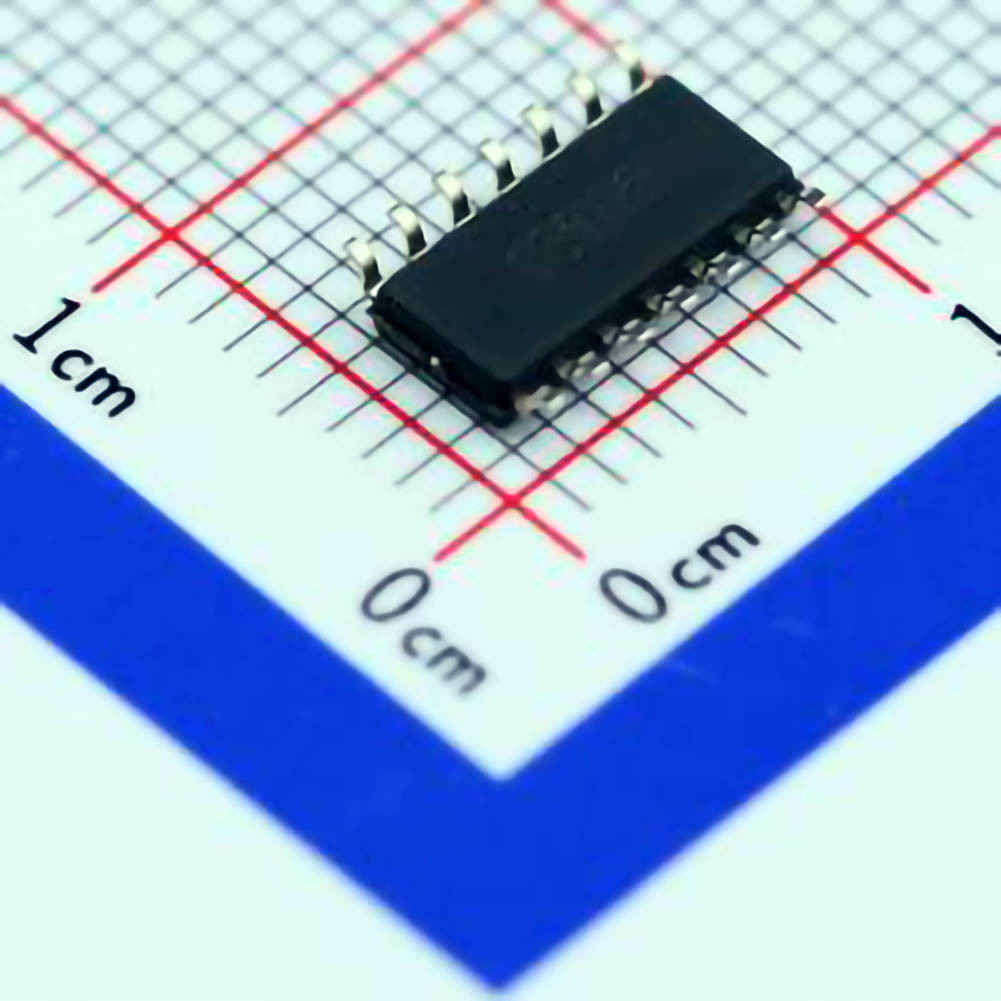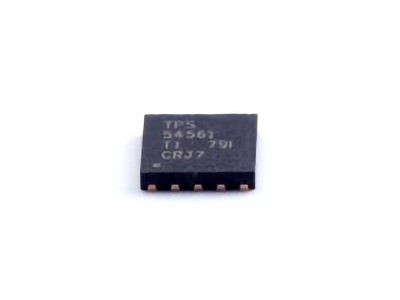
The LM324 DR operational amplifier is a widely used component in electronics due to its versatility, low cost, and availability. However, like any electronic device, it is not immune to issues during design, testing, or operation. This article provides a comprehensive guide on common troubleshooting strategies for the LM324DR , helping engineers and hobbyists quickly identify and resolve typical problems encountered in circuits using this op-amp.
LM324DR, troubleshooting, solutions, operational amplifier, electronics, op-amp, circuit design, voltage issues, gain problems, noise, stability
Common Issues with the LM324DR and Troubleshooting Methods
The LM324DR is a quad operational amplifier that is known for its low Power consumption and versatility, often used in applications ranging from signal processing to voltage control. Despite its popularity, users may encounter several issues related to its integration into circuits. Understanding these potential problems and their solutions is crucial for ensuring optimal performance.
1. Power Supply Issues
One of the most common causes of problems with the LM324DR is power supply-related issues. The LM324DR operates with a single supply voltage, typically ranging from 3V to 32V (or ±1.5V to ±16V in dual supply mode). A malfunctioning power supply can lead to improper operation of the op-amp, resulting in distorted signals or no output at all.
Troubleshooting Steps:
Check the Voltage Levels: Ensure the op-amp’s supply voltage matches the required operating range. If using a single supply configuration, verify that the voltage is within the recommended limits. Under- or over-voltage conditions can cause malfunction.
Inspect Power Pins: Confirm that the power pins (pins 4 and 11) are properly connected to the supply. An improperly connected power pin will lead to no operation.
Verify Grounding: Make sure that the ground is properly connected. Floating or incorrect grounding can lead to unstable behavior, including oscillation or improper output.
2. Incorrect Input Voltage Range
The LM324DR, like other op-amps, requires the input voltage to stay within certain limits to avoid damage or incorrect operation. For the LM324DR, the input voltage should stay within the range of Vss - 0.3V to Vdd + 0.3V. Exceeding this range can cause the op-amp to behave unpredictably or damage the chip.
Troubleshooting Steps:
Check Input Signals: Verify that the voltage applied to the inverting and non-inverting terminals is within the op-amp's recommended input range. If your circuit design requires signals outside this range, consider using clamping diodes or buffer stages.
Measure Input Impedance: If you're unsure whether the input voltage is within range, measuring the impedance of the signal source may help. Ensure the input impedance is within the op-amp’s specified limits to prevent distortion.
3. Gain Issues and Saturation
Gain problems can manifest as the op-amp output being stuck at the upper or lower rail (saturation), or the output may not follow the input signal as expected. The LM324DR is designed to provide a linear relationship between the input and output voltages. If the gain is set too high, the amplifier might enter saturation, resulting in clipping or inability to correctly amplify the signal.
Troubleshooting Steps:
Examine Feedback Loop: The gain of the LM324DR is primarily set through external Resistors in the feedback loop. Ensure that these resistors are correctly calculated and installed. A miscalculation here could lead to excessive or insufficient gain, causing saturation or weak signal amplification.
Adjust Input Signal Level: If the input signal level is too high, it may drive the op-amp into saturation. Try reducing the input signal amplitude or adjust the feedback network to ensure the op-amp remains within its linear operating region.
Check for Short Circuits: If the op-amp’s output is stuck at the supply rail, check for a short circuit in the feedback loop or output load. This could cause excessive current draw, forcing the op-amp into saturation.
4. Oscillations and Instability
Another common problem with the LM324DR, particularly in high-frequency applications, is instability or oscillation. This issue arises when the op-amp amplifies high-frequency noise or oscillates due to poor circuit layout or improper compensation.
Troubleshooting Steps:
Stabilize with Capacitors : To eliminate high-frequency oscillations, try adding small compensation capacitor s (typically in the range of 10pF to 100pF) between the op-amp’s output and inverting input. This can help stabilize the circuit by reducing the gain at high frequencies.
Check Layout and Wiring: Poor PCB layout can lead to parasitic capacitances and inductances, which in turn cause instability. Keep the feedback loop short and avoid running high-speed signals close to the op-amp’s inputs.
Use a Bypass Capacitor: Adding a bypass capacitor (e.g., 0.1µF) between the power pins (Vdd and Vss) can help reduce noise and improve stability, especially when the op-amp is powered by a noisy supply.
5. Input Bias Current and Offset Voltage Issues
The LM324DR, like most operational amplifiers, has a small input bias current and an offset voltage. While these values are typically low, they can cause problems in precision applications. The input bias current can cause voltage drops across high-value resistors in the input network, leading to incorrect operation. Similarly, offset voltage can cause the op-amp to output a small voltage even when the inputs are at the same potential.
Troubleshooting Steps:
Use Offset Nulling: Some versions of the LM324DR offer offset nulling pins, which allow you to manually adjust the offset voltage. Use a potentiometer to reduce the offset and improve the accuracy of your circuit.
Compensate for Bias Current: If the input bias current is causing issues, consider using lower-value resistors in the input network or employ a biasing scheme that accounts for the current.
Solutions to Enhance Performance and Prevent Common Issues with the LM324DR
While troubleshooting specific issues with the LM324DR is crucial, there are additional strategies that can prevent these problems from arising in the first place. Implementing best practices during circuit design and assembly can help ensure the LM324DR performs optimally in your application.
6. Selecting Proper External Components
The performance of the LM324DR depends heavily on the surrounding components, especially resistors and capacitors. Choosing the right external components will help achieve desired functionality and prevent many common issues.
Recommended Practices:
Use High-Quality Resistors and Capacitors: When designing the feedback network and other critical parts of the circuit, opt for resistors with low temperature coefficients and capacitors with tight tolerance values. This ensures consistent performance over temperature and time.
Match Impedances: When connecting the op-amp to other stages in your circuit, ensure that the impedance levels are matched. This will help reduce signal distortion and noise.
Power Supply Decoupling: To minimize power supply noise, always use decoupling capacitors close to the power pins of the LM324DR. A combination of a large (10µF to 100µF) electrolytic capacitor and a small (0.1µF to 1µF) ceramic capacitor is ideal.
7. PCB Design Best Practices
A well-designed PCB can significantly reduce the likelihood of problems with the LM324DR. Ensuring a proper layout and grounding strategy is essential for minimizing noise and instability.
Design Tips:
Keep Signal Paths Short: To reduce parasitic capacitance and inductance, keep the signal traces as short and direct as possible. This is especially important for high-frequency signals.
Use Ground Planes: A solid ground plane under the LM324DR can help reduce noise and improve stability by providing a low-inductance return path for currents.
Separate Analog and Digital Grounds: If your design involves both analog and digital signals, separate the analog and digital grounds. Use a single point for connecting the two grounds to avoid digital noise coupling into the analog signals.
8. Temperature Considerations
Temperature variations can affect the performance of the LM324DR, especially in precision applications. Understanding how temperature impacts the op-amp’s behavior can help mitigate related issues.
Solutions:
Thermal Compensation: In circuits requiring high accuracy, use temperature-compensating components (such as resistors with low temperature coefficients) to minimize temperature-induced drift.
Use of Heatsinks or Thermal Pads: In high-power applications where the op-amp may dissipate significant heat, consider adding a heatsink or thermal pad to keep the LM324DR within its safe operating temperature range.
9. Noise Reduction Strategies
Noise is a significant concern, especially in sensitive analog circuits. The LM324DR, though designed for low noise, can still pick up external interference if not properly shielded.
Noise Mitigation Methods:
Shielding: In environments with high electromagnetic interference ( EMI ), use metal shielding or enclosures to protect the LM324DR and its circuitry from external noise sources.
Twisted Pair Wires: For long signal connections, use twisted pair wires to help cancel out induced noise from external sources.
Low-noise Power Supplies: If the op-amp is powered by a noisy supply, consider using voltage regulators or low-noise power supply designs to reduce ripple and noise on the power lines.
10. Utilizing Simulation Tools
Before building physical circuits, use circuit simulation software to model the LM324DR’s behavior in your design. This allows you to identify potential issues with the layout, gain, or component choices before committing to hardware.
Simulation Benefits:
Predictive Analysis: Simulators like LTspice or PSpice can predict performance issues, such as stability problems, biasing issues, and signal distortion.
Component Selection: Simulators can help you optimize resistor and capacitor values to achieve the desired frequency response and gain.
In conclusion, the LM324DR is an incredibly versatile op-amp, but like any component, it is prone to issues during circuit design and operation. By following best practices in power supply design, feedback configuration, and layout, as well as employing thoughtful troubleshooting strategies, you can resolve many common problems that may arise with this op-amp. Whether you’re a novice or an experienced engineer, understanding these solutions will help you achieve optimal performance in your LM324DR-powered circuits.
If you are looking for more information on commonly used Electronic Components Models or about Electronic Components Product Catalog datasheets, compile all purchasing and CAD information into one place.

